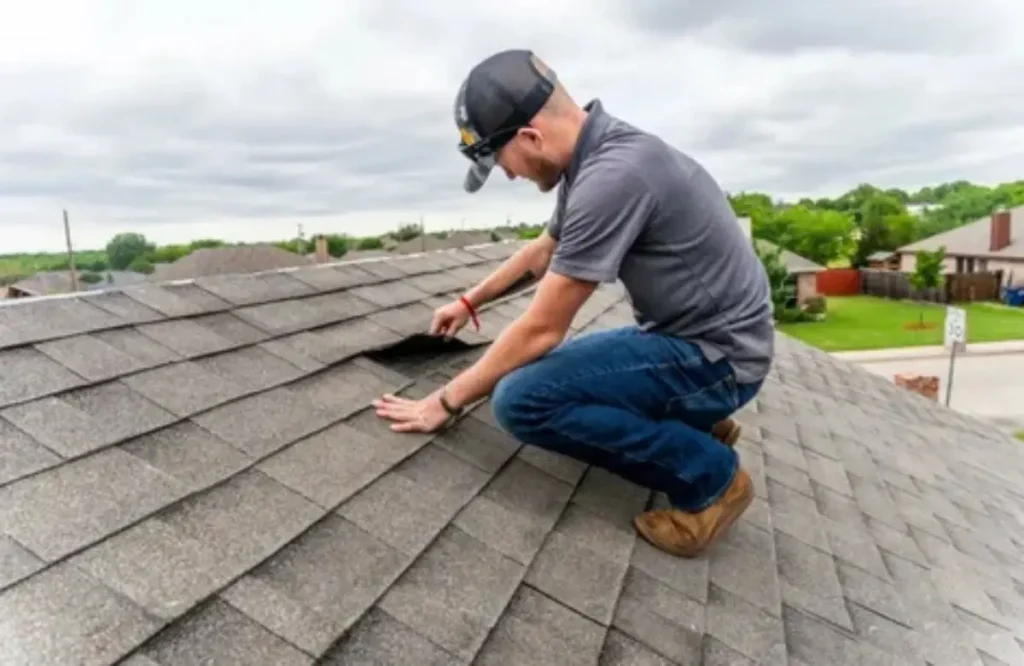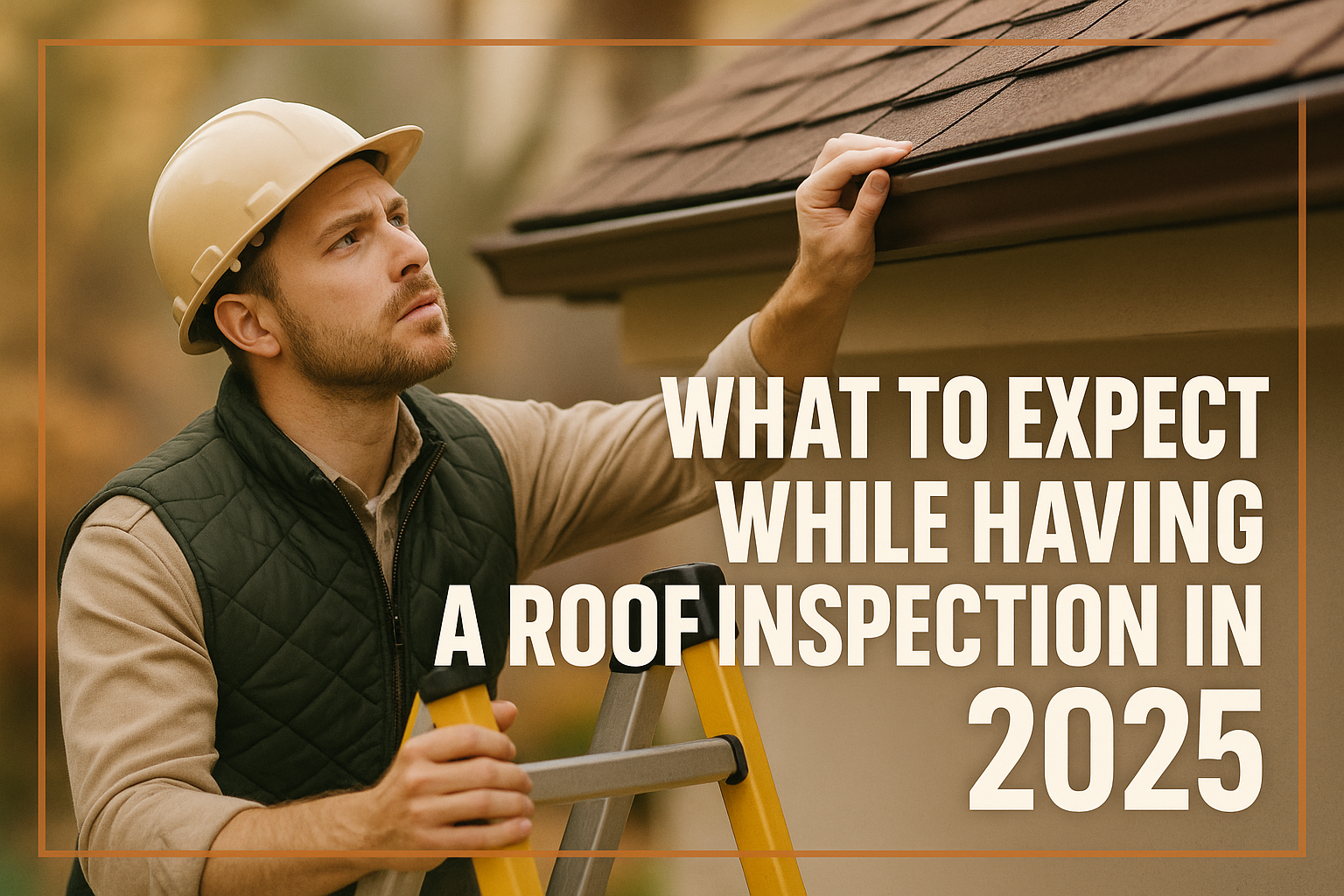Your roof works hard every single day, shielding you from rain, wind, heat, and snow. But like anything that takes a beating, it needs regular checkups to stay strong. That’s where a roof inspection comes in.
If you’re planning a roof inspection in 2025, you might be wondering what exactly happens during the process. Whether it’s a residential roof inspection or a commercial roof inspection, knowing what to expect helps you feel prepared and confident when the inspector arrives.
Why Roof Inspections Matter More Than Ever in 2025
The roofing industry has evolved. Modern roof inspection services now use advanced tools like drones, infrared cameras, and digital reporting making inspections faster, safer, and more accurate.
With unpredictable weather patterns, strong storms, and aging roofs, having your roof inspected regularly is no longer optional; it’s essential. A professional roof inspection helps identify hidden damage before it turns into costly repairs, saving homeowners and business owners thousands in the long run.
What Happens During a Roof Inspection
Trained roof inspectors or roof inspection contractors would take a very close look at each aspect of your roof during a roof inspection; the shingles, gutters, flashing, vents and other spaces inside the attic. This is aimed at identifying the possible issues in time and offering a comprehensive roof inspection report that would describe the roof condition and any suggested works.
We shall examine the process step by step until you know exactly what to expect when you have hired roofing inspection companies in 2025.

Roof Inspection in 2025
1. Scheduling the Inspection
The first thing you will do is to book an appointment with a roof inspection company or a local roof inspection expert. The majority of the companies provide residential and commercial roof inspections. You may as well ask for a special service such as insurance for storm damage, or a roof inspection in case of bad weather in the recent past or when filing a claim.
Most companies are using digital scheduling in 2025; thus, it is more convenient to choose a date and time that best suits you. Others even accept online requests for quotes so that you are well aware of how much it will cost you before anyone arrives to inspect your roof.
2. Arrival and Initial Assessment
Upon the arrival of your roof inspector, he will initially carry out some form of visual analysis of your premises. They will seek evidence of any visible damage on-ground, i.e. missing shingles, hanging areas, water stains on the side and soffits, etc.
They’ll also ask a few questions:
- When was your roof last inspected?
- Have you noticed any leaks or water stains inside?
- Was your area recently hit by storms?
This helps the roofing inspector focus on key problem areas.
3. Exterior Roof Inspection
The inspector will be on top of the roof to examine the surface materials. This section plays a vital role in identifying the warning signs that homeowners usually overlook. They’ll examine:
- Shingles or tiles: Inspecting the shingles against cracks, curling or missing.
- Flashing and seals: The protection of chimneys, vents, and skylights should be watertight.
- Gutters and drainage: Checking whether water is moving correctly, and there is no water blockage.
- Roof edges: Checking whether there are raised or broken parts due to wind.
In case of commercial roof inspections, the task involves inspection of flat surfaces, drains, and roof membranes on punctures or water pools, which are typical features that reduce the lifespan of a roof.
4. Interior and Attic Inspection
The proper inspection of the roof involves the check of the interior also. The inspector will check the attic to determine the concealed damage that cannot be seen outside. They’ll look for:
- Water stains or mold growth
- Wet insulation
- Light seeping through cracks
- Signs of animal activity or rot
This will assist the roof inspection contractor in establishing whether the leakage is active or whether the insulation and ventilation are to be improved.
5. Use of Modern Technology
Most of the roof inspection firms of 2025 operate using advanced equipment to be careful:
- Aerial shots are taken using drones on large or steep roofs.
- Under the shingles or membranes, moisture is trapped and this is detected by infrared scanners.
- Moisture meters help in detecting those places that are prone to leakages in the near future.
The technology has enabled the professional roof inspection service provider to identify issues in the beginning stages of their development, when they are not serious.
6. Reviewing the Roof Inspection Checklist
The majority of roofing inspectors have a standard roof inspection checklist that he or she adhere to so that nothing is left behind. Such a checklist typically contains:
- Roof surface condition
- Flashing and vent seals
- Gutters and downspouts
- Skylights and chimneys
- Attic ventilation and insulation
- Drainage and structural integrity
The checklist enhances consistency and accuracy, be it a roof inspection company in Clearwater, Odessa, Plant City, or Griswold, CT.
7. Roof Inspection Report and Recommendations
After inspection, you will get a roof inspection report – normally after 24-48 hours. It contains images, descriptions of the problems, and suggestions. The report could point out the fact that you require:
- Minor repairs
- Preventive maintenance
- Full roof replacement
8. Discussing Roof Replacement Needs
In case the inspector discovers serious problems such as structural damage, excessive leakages or old shingles, they will negotiate with you on whether you should have a replacement. The question people will most commonly ask is: how frequently does a roof need to be replaced?
Typically:
- Asphalt shingles: Every 20–25 years
- Metal roofs: 40–70 years
- Flat commercial roofs: Around 20 years
The roofing inspector will let you know how long your roof will last and when it is time to start planning its replacement.
9. Insurance and Documentation
In case your roof has been damaged by the storm, it becomes important that a roof inspection is conducted to have insurance. The inspector will give you a list of reports that you can send along with the claim. This is to make sure that your insurance company has the right documentation of how and what damage it was.
10. Follow-Up and Maintenance Plan
Reasonable roof inspection firms do not fade out after the report. They tend to provide servicing packages, regular check-ups, or coupons for repair services. Periodic checks – at least once in a year – will help in determining roof problems early enough before bigger problems occur.
Conclusion
The initial step to securing your largest investment, your home, is roof inspections. The technology and qualified experts will make the process smarter, faster, and more reliable than ever before in 2025.
The next roof inspection will not be a mystery to you; you will know what to expect, and you will be sure your roof will be in good hands.
To learn more or schedule a professional inspection, visit Down To Earth Roofing.
FAQs
1. How much is a roof inspection in 2025?
It varies by roof size and type but typically ranges from $150 to $400 for standard homes and $500+ for commercial buildings.
2. How often should I get my roof inspected?
At least once a year, or after major storms, to prevent small issues from turning into costly repairs.
3. What does a roof inspection include?
It includes checking shingles, flashing, gutters, attic, ventilation, and structural integrity everything from top to bottom.
4. Can roof inspections detect leaks before they start?
Yes, tools like infrared scanners help detect hidden moisture that signals early leak formation.
5. Are commercial roof inspections different from residential ones?
Yes. Commercial inspections focus on flat roofs, drainage systems, and membranes, while residential ones cover shingles, vents, and attic spaces.


